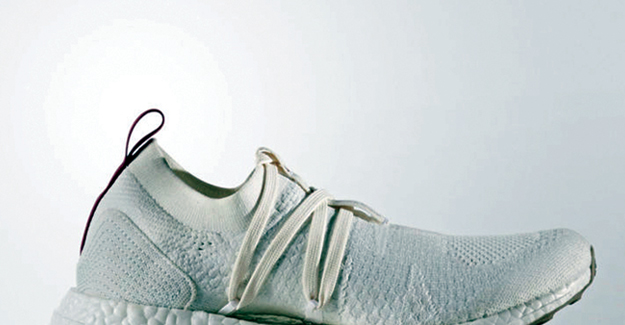Fabric's New Role In Shoes
Fabric's New Role In Shoes

The release of the Stella McCartney's UltraBoost featuring Parley's recyclable material from the ocean has the sneaker world and ocean lovers in awe. As one of the first collaborations of its kind, the sleek new UltraBoost is proving that innovation in fabric, high performance athletic gear and eco friendly footwear is becoming a trend.
The UltraBoost are made from yarn spun from reclaimed and recycled ocean waste and the adaptive iconic Adidas Primeknit upper gives the wearer strategic support with the flexible front part that allows the foot to take its own form of comfortable based on its shape. Not to mention, the female-specific free-floating arch- design hugs your foot, letting you move and flex naturally.
This type of footwear is the latest to embrace green manufactured material that is not made from over-processed and over-developed synthetic materials. In fact, alternative material and fabrics in the garment and footwear industry have been trending as sustainability becomes an action rather than a talked about concept.
Small production companies who specialise in using technology, graphic design and recyclable fabrics are popping up around the world to promote a more environmentally friendly manufacturing environment. For example, family-owned and Brooklyn based company Eskayel sources local materials to produce custom fabrics for drapes and wall upholstery.
Epson Printing has also risen to the forefront after years of being an afterthought for printing. New technologies (re: 3D machines) from Epson are allowing designers to push the boundaries of colour and quality while simultaneously giving creative teams incredible versatility & productivity.
If you want something a specific colour in a specific design, it's possible and you don't have to produce a large quantity of it for it to be affordable, which is the problem with brands over producing fabric they will never be able to use in total.
With the market for worldwide digital textile printing expected to grow annually at almost 25%, there will be more new materials on the retail market, and things like cotton or polyester will be a thing of the past. In essence, this means that sneakers and other historically hard to breakdown apparel will not pose such a threat to the environment when it comes to burning waste. Burnt rubber is toxic, however, when you burn or decompose apparel made from natural fabrics, it doesn't pose such a threat to the environment or to human health. As technology continues to push the boundaries in manufacturing, all facets of apparel and its related lifecycle should be examined, including what happens after the item no longer holds a place in the consumer's wardrobe. That's why products like the Adidas UltraBoost x Stella McCartney may look pretty, but when the sneaker starts to fall apart after each wear and it's time to decompose, they will literally breakdown and not be as harmful to the environment as traditional rubber has been.



 textileexcellence
textileexcellence 







